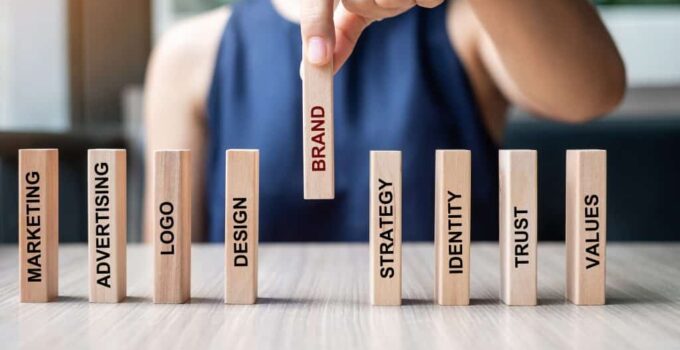What is brand equity and how do you develop it? These are two important questions that businesses should ask themselves if they want to create a successful brand. We’ll discuss what brand equity is and how you can go about developing it for your business.
What is Brand Equity?
Brand equity is the value of a brand. It’s what sets your products or services apart from the competition and makes them recognizable and trusted by consumers. Strong brand equity can help you charge more for your products or services, attract new customers, and build loyalty among your existing customer base.

Source: unsplash.com
You know a business has strong brand equity when customers are willing to pay more for their products or services, when they’re the first choice in their category, or when they have a high level of customer satisfaction. Think about the first brand that pops into your mind when you hear the word “coffee.” For most people, it’s Starbucks. That’s because they’ve built up strong brand equity over the years. They’re known for their quality, convenience, and they have a strong emotional appeal.
If you didn’t think of Starbucks but perhaps another coffee company, that’s okay. It just means that another company has built up stronger brand equity in your mind. The point is that when you have brand equity, people are more likely to think of you first, and this is what will help drive sales. They know what to expect from you and are therefore more likely to do business with you.
Having brand equity will affect your bottom line because customers will usually always go for a brand that they trust the most–even when there are some negative associations. For example, people might not like how Starbucks prices their coffee much higher than other places. But because they trust the brand, they’re willing to pay for it.
How to Develop Brand Equity

Source: shoppinggives.com
Now that you understand what brand equity is, you probably have a general idea of why it’s important to develop it. This includes everything from:
- Increased sales
- Attracting new customers
- Building customer loyalty
- Lower marketing costs
- Reduced price sensitivity
- Greater customer lifetime value
- Increased market share
There are countless ways to develop brand equity for your business, so we’ll only discuss the most impactful ones.
Brand Perception

Source: spellbrand.com
Brand perception is everything when it comes to developing brand equity. Your business needs to always focus on creating a positive perception. This means that you want consumers to think highly of your brand in terms of quality, value, trustworthiness, and as a company or organization. There are a few ways to create a positive brand perception:
- Delivering on your promises. This is probably the most influential way to create a positive brand perception. If you make promises to your customers, you need to deliver on them. This goes for all your products and services. When you deliver on your promises, you’ll build trust and make your customers more likely to do business with you again. Failing to deliver on promises will damage your brand’s reputation and will be very difficult to recover from.
- Creating a strong emotional connection. Most people make purchases based on emotions. So, if you want customers to become your brand advocates, your business needs to create a strong emotional connection. You can do this by telling stories, using certain colors and images, and evoking certain emotions in your advertising. Touch your customers’ hearts in a meaningful, authentic, and memorable way.
- Aligning with customer values. For customers to connect with your brand, your values need to align with theirs. They want to see that you share the same values with them and that you’re not just trying to sell them anything.
- Provide the best customer service possible. This one should go without saying, but providing the best customer service possible is crucial to developing positive brand perception and equity. If you provide excellent customer service, your customers will trust your company and hopefully turn into loyal brand advocates.
Although many of these are easy to understand, they can be difficult to execute. But if you want to develop strong brand equity, it’s crucial that you do them right, especially with things like customer service. All it takes is one bad experience to lose a customer forever. Click here to check out a branding design firm to learn more about high-quality brand design.
Brand Awareness

Source: performancein.com
Increasing your brand awareness is another significant way to develop brand equity. If people don’t know about your brand, they can’t become customers or advocates. So, you need to make sure that your target market is aware of your brand and everything it has to offer, including your values and beliefs. There are numerous ways to increase brand awareness-advertising, marketing, PR, social media, content creation, and so much more.
If you’re thinking about developing brand equity, you probably already know how to increase your brand awareness. One unique idea is the use of feather flags. Flagdom offers high-quality feather flags that are completely customizable. You can check them out at https://flagdom.com/feather-flags/custom-swooper-feather-flags.
Customer Experience
Like providing the best customer service possible, you’ll also want to focus on creating a great customer experience. This starts at the very beginning when they first learn about your brand and extends all the way to after they make a purchase. You want them to have a positive experience every step of the way so that they’re more likely to trust your brand.
You can improve your customer experience by making sure your customers are always treated with respect, providing helpful and knowledgeable customer service, and delivering on your promises. Make it easy for your customers to purchase your goods or services and let them know you’re there for them after the sale.
If you’re selling online, having a fast and user-friendly website is essential to providing a great customer experience. Your website should be easy to navigate, have clear and concise product descriptions, and offer multiple payment options. The next time you go to purchase something, think about how the process was and what you can do to improve it for your customers.







